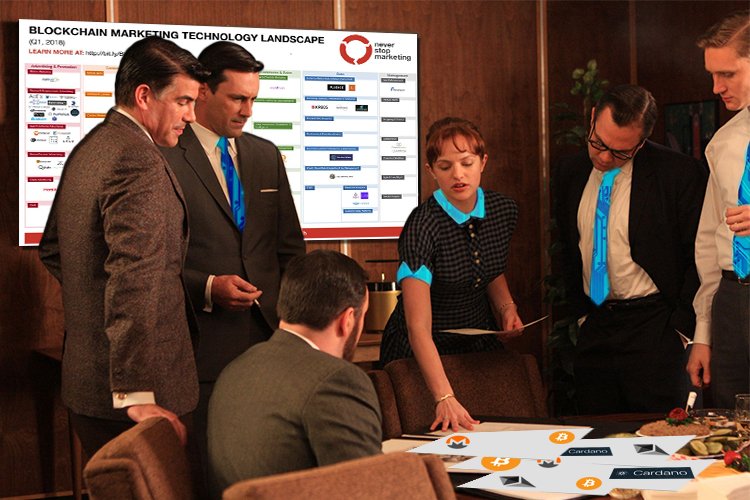When Youth Is Better Than Experience: 5 Cases, Where Crypto Does More

Advertising is a ginormous sociocultural layer of every society, actively forming under influences of changes in its structure. Easiest example - advertising of the post-2WW America. It established that famous “American family” trope with two kids, housewife mother, and father that keeps on laughing. From generation to a generation message of the advertising is changing, but its shape stays more or less the same and there is a problem here: the industry is stuck in a perpetual crisis, where situations where expenses grow and progress is barely noticeable becoming a norm.
Furthermore, modern society is ready and able to pay to get rid of the advertising. Especially when it comes to millennials, that become the main aim of all advertising campaigns. It’s painfully apparent that PR desperately needs tools to allow itself to grow. And advertising tricks that are used in the cryptoverse might be the right thing, that has the potential to expand the market. Bitnewstoday.com has collected 5 cases from the 2018 world of crypto advertising that give mainstream advertisers a run for their money.
1. LIVE AIRDROPS
During one year anniversary of the Bitcoin Cash, people from BCH came with something special: They organized live airdrops via posters with QR-codes (Around 1000 for each major city). Participants could play a small game to get it: use geolocation and find them and scan the posters to get that sweet-sweet crypto. That event allowed to introduce many people to crypto and raise the amount of users via those who liked using digital money.
Plus - it was reasonably cheap. Because even if every participant was getting one BCH, this whole event has cost them slightly more than $6 mln, but this does not mean that they used it all. There is no way to say if all the live checks were scanned within given 24 hours, so it’s entirely possible that they used far less than that. Sure, that might still sound expensive, but this was a worldwide event. They have done it in 15 major cities all across Europe and North America, which means that this event was super budget friendly.
2. Bitcoin for ingenuity
But this is not the most comfortable format and it does not suit everyone: such things are mostly aimed at the active and young people that have enough time to look for the posters and do this offline “quest”. For the other type of customers, crypto has an answer too. Authors of the web cartoon «Hamsters Vs. Bulls», the series decided to include puzzles in each episode of the series, including already published teaser trailer. All you need is to find the puzzle, figure out the solution and then get the bitcoin.
This kind of direct interaction between end user and advertiser is a drastic difference between traditional advertising that is mostly tolerated by the customers and highly personalized approach that crypto verse keeps showing to its followers.
3. Play the game for the win
This use-case shows us the potential of the ARG (alternate reality game) in marketing. The “310 bitcoin” challenge that gave everyone a chance to solve a puzzle. Within 18 days everyone was going mad over the task with the 310 bitcoin bounty (approx. $2 mln). Name of the smart and the lucky guy stayed unknown, but transaction confirmation was posted within the network.
This event got them the ginormous amount of organic audience. Because of that, Reddit administration had to close the topic a couple of times, since the servers were unable to deal with the influx that was way too massive even for the famous social platform.
But this does not mean that you need to roll out something equally impressive as 310 bitcoins for an event like this. Far less rewarding community driven ARGs with prize funds of 1,0.5 and even 0.005 BTC are gathering many people and stay popular for 10-15 days on the average.
4. Ethics is in danger!
But there is also another interesting example, that had the cryptoverse shook. They imitated bitcoin dusting attack. This has caused a massive surge of paranoia for everyone who received ominous 0,00000888 BTC ($0,06) on their wallets. At least four it centered multimedia wrote about it and social media was roaring about it.
Later the same day it ended up being advertising from a crypto tumbler service that imitated real attack. Even though this is highly dubious from an ethical standpoint, this was perfectly okay since no one ever risked anything in reality.
5. HODL your crypto
And last but not the least example shows us how to use mainstream personalities, but do it not cringe-worthy as it’s common with the mainstream advertisers.
Members of the cryptoverse ended up liking a character from a very popular series that says just one word that reminded that famous meme of the crypto traders “HODL”. Because of that one exchange casted an actor from this show for a small and funny clip where he tells other traders to HODL their crypto. At the first glance - that's just blatant exploitation of the well-known character, but it’s deeper than that. This was pulling the audience of mainstream series into the crypto, albeit it looked like a message for the crypto community.
And this is how cryptoverse does its advertising, without billions and paradigm of the “kids-animals-sex”. Since that message is not interesting to the crypto market and general market. According to the Mccarthy group social survey, 86% of the gen Y see pretty much all traditional advertising in the negative light. And they are the future of the market, it’s basis, and everyone who will shrug off “Those pesky millennials” will be shrugging off 25% of their potential customers.